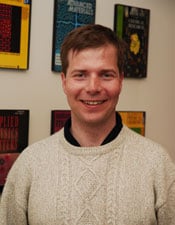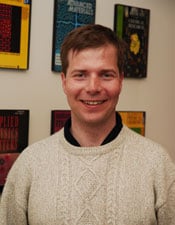
From the standpoint of the development of advanced nanotechnology, the most useful type of machine intelligence is AI that facilitates scientific and engineering design. A computer network described in this news release from Northwestern University could greatly facilitate chemical synthesis useful for the development of molecular manufacturing. From “Northwestern Scientists Create Chemical Brain“, by Megan Fellman:
Northwestern University scientists have connected 250 years of organic chemical knowledge into one giant computer network — a chemical Google on steroids. This “immortal chemist” will never retire and take away its knowledge but instead will continue to learn, grow and share.
A decade in the making, the software optimizes syntheses of drug molecules and other important compounds, combines long (and expensive) syntheses of compounds into shorter and more economical routes and identifies suspicious chemical recipes that could lead to chemical weapons.
“I realized that if we could link all the known chemical compounds and reactions between them into one giant network, we could create not only a new repository of chemical methods but an entirely new knowledge platform where each chemical reaction ever performed and each compound ever made would give rise to a collective ‘chemical brain,’” said Bartosz A. Grzybowski, who led the work. “The brain then could be searched and analyzed with algorithms akin to those used in Google or telecom networks.”
Called Chematica, the network comprises some seven million chemicals connected by a similar number of reactions. A family of algorithms that searches and analyzes the network allows the chemist at his or her computer to easily tap into this vast compendium of chemical knowledge. And the system learns from experience, as more data and algorithms are added to its knowledge base.
Details and demonstrations of the system are published in three back-to-back papers in the Aug. 6 issue of the journal Angewandte Chemie. …
In the Angewandte paper titled “Parallel Optimization of Synthetic Pathways Within the Network of Organic Chemistry,” the researchers have demonstrated algorithms that find optimal syntheses leading to drug molecules and other industrially important chemicals.
“The way we coded our algorithms allows us to search within a fraction of a second billions of chemical syntheses leading to a desired molecule,” Grzybowski said. “This is very important since within even a few synthetic steps from a desired target the number of possible syntheses is astronomical and clearly beyond the search capabilities of any human chemist.”
Chematica can test and evaluate every possible synthesis that exists, not only the few a particular chemist might have an interest in. In this way, the algorithms find truly optimal ways of making desired chemicals. …
Another important area of application is the shortening of synthetic pathways into the so-called “one-pot” reactions. One of the holy grails of organic chemistry has been to design methods in which all the starting materials could be combined at the very beginning and then the process would proceed in one pot — much like cooking a stew — all the way to the final product.
The Northwestern researchers detail how this can be done in the Angewandte paper titled “Rewiring Chemistry: Algorithmic Discovery and Experimental Validation of One-Pot Reactions in the Network of Organic Chemistry.”
The chemists have taught their network some 86,000 chemical rules that check — again, in a fraction of a second — whether a sequence of individual reactions can be combined into a one-pot procedure. Thirty predictions of one-pot syntheses were tested and fully validated. Each synthesis proceeded as predicted and had excellent yields. …
The third area of application is the use of the Chematica network approach for predicting and monitoring syntheses leading to chemical weapons. This is reported in the Angewandte paper titled “Chemical Network Algorithms for the Risk Assessment and Management of Chemical Threats.”
“Since we now have this unique ability to scrutinize all possible synthetic strategies, we also can identify the ones that a potential terrorist might use to make a nerve gas, an explosive or another toxic agent,” Grzybowski said.
Algorithms known from game theory first are applied to identify the strategies that are hardest to detect by the federal government — the use of substances, for example, such as kitchen salt, clarifiers, grain alcohol and a fertilizer, all freely available from a local convenience store. Characteristic combinations of seemingly innocuous chemicals, such as this example, are red flags. …
It will be really interesting to see not only how the system improves as it learns from experience, but for which other areas of science and technology this approach might prove useful.
—James Lewis, PhD
